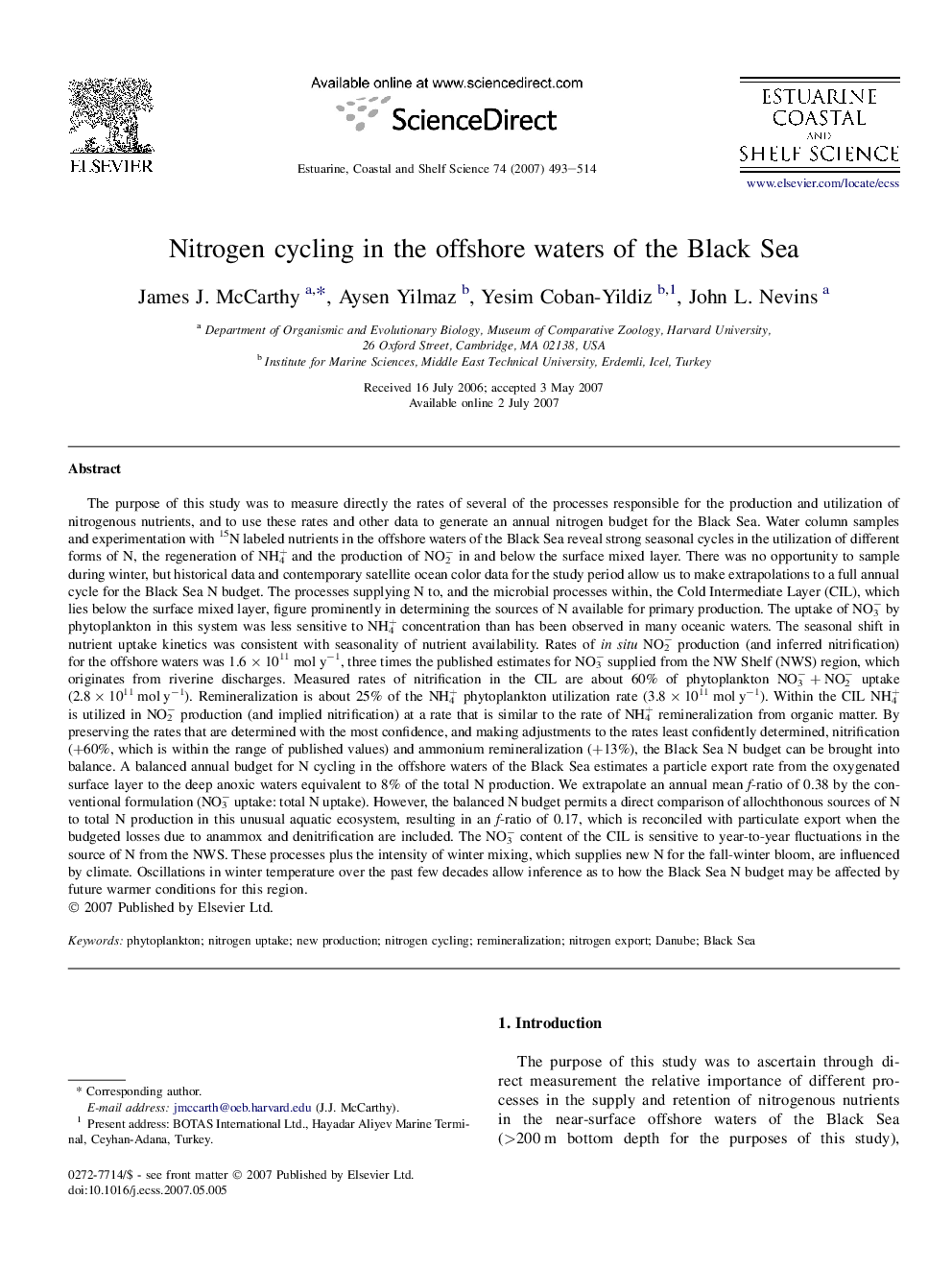| کد مقاله | کد نشریه | سال انتشار | مقاله انگلیسی | نسخه تمام متن |
|---|---|---|---|---|
| 4542380 | 1326764 | 2007 | 22 صفحه PDF | دانلود رایگان |

The purpose of this study was to measure directly the rates of several of the processes responsible for the production and utilization of nitrogenous nutrients, and to use these rates and other data to generate an annual nitrogen budget for the Black Sea. Water column samples and experimentation with 15N labeled nutrients in the offshore waters of the Black Sea reveal strong seasonal cycles in the utilization of different forms of N, the regeneration of NH4+ and the production of NO2− in and below the surface mixed layer. There was no opportunity to sample during winter, but historical data and contemporary satellite ocean color data for the study period allow us to make extrapolations to a full annual cycle for the Black Sea N budget. The processes supplying N to, and the microbial processes within, the Cold Intermediate Layer (CIL), which lies below the surface mixed layer, figure prominently in determining the sources of N available for primary production. The uptake of NO3− by phytoplankton in this system was less sensitive to NH4+ concentration than has been observed in many oceanic waters. The seasonal shift in nutrient uptake kinetics was consistent with seasonality of nutrient availability. Rates of in situ NO2− production (and inferred nitrification) for the offshore waters was 1.6 × 1011 mol y−1, three times the published estimates for NO3− supplied from the NW Shelf (NWS) region, which originates from riverine discharges. Measured rates of nitrification in the CIL are about 60% of phytoplankton NO3− + NO2− uptake (2.8 × 1011 mol y−1). Remineralization is about 25% of the NH4+ phytoplankton utilization rate (3.8 × 1011 mol y−1). Within the CIL NH4+ is utilized in NO2− production (and implied nitrification) at a rate that is similar to the rate of NH4+ remineralization from organic matter. By preserving the rates that are determined with the most confidence, and making adjustments to the rates least confidently determined, nitrification (+60%, which is within the range of published values) and ammonium remineralization (+13%), the Black Sea N budget can be brought into balance. A balanced annual budget for N cycling in the offshore waters of the Black Sea estimates a particle export rate from the oxygenated surface layer to the deep anoxic waters equivalent to 8% of the total N production. We extrapolate an annual mean f-ratio of 0.38 by the conventional formulation (NO3− uptake: total N uptake). However, the balanced N budget permits a direct comparison of allochthonous sources of N to total N production in this unusual aquatic ecosystem, resulting in an f-ratio of 0.17, which is reconciled with particulate export when the budgeted losses due to anammox and denitrification are included. The NO3− content of the CIL is sensitive to year-to-year fluctuations in the source of N from the NWS. These processes plus the intensity of winter mixing, which supplies new N for the fall-winter bloom, are influenced by climate. Oscillations in winter temperature over the past few decades allow inference as to how the Black Sea N budget may be affected by future warmer conditions for this region.
Journal: Estuarine, Coastal and Shelf Science - Volume 74, Issue 3, 1 September 2007, Pages 493–514